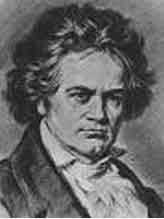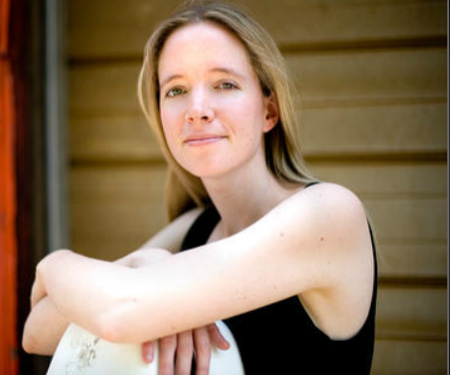The Sinfonia begins its 33rd Season with a "Musical Tour" Concert. The program will include music from several countries, featuring
- Germany Beethoven's witty and powerful Symphony No. 8.
- Austrian Franz Joseph Haydn's dramatic Symphony No. 49, "La Passione,"
- French composer Gabriel Faur?'s lovely Pavane,
- Norwegian composer Johan Svendsen's evocative Romanze for Violin and Orchestra, with Randall Brinton as soloist,
- and the energetic "Faniska" Overture, by Italian Luigi Cherubini.
This Concert will take place on Sunday, November 11, at 7:00 p.m., at the Paradise Valley 7th-Day Adventist Church, in National City. The Church is located at 2701 East 8th St., in National City, not far from the 805 freeway. Admission and parking will be Free.
"Looking East," a program highlighting music of eastern Europe, featuring Dvorak's mighty Symphony No. 7. Also featured in this concert will be a perennial favorite, young winners of the Music Teachers Association Concerto Competition, in pieces to be announced.
The Sinfonia returns to the beautiful Church of St. Mary Magdalene on Sunday, June 3, at 2:00 in the afternoon, with a concert featuring Antonin Dvorak’s profound Symphony No. 7, in D Minor. Considered by many to be the composer’s finest symphony, this work has passages of darker drama than we often hear in Dvorak, yet also has his trademark lovely melodies and Czech flavor. Also featured will be Carl Maria von Weber’s Andante and Hungarian Rondo, with Music Teachers Association Competition winner Zackery Edwards as bassoon soloist. Rounding out on this program will be the haunting “Blades of Grass,” for English Horn and Strings, by American composer Romeo Cascarino, and two of the vibrant Hungarian Dances of Johannes Brahms. The Church is located at 1945 Illion St., atop a hill with a spectacular view of Mission Bay.
St. Mark’s United Methodist Church Concert Series, with a program entitled “A Vienna Connection,” highlighting composers with ties to that celebrated city. The featured works will be Mozart’s last symphony, his masterful “Jupiter,” and the lovely Variations On a Theme of Haydn, by Johannes Brahms. (The theme turned out not to be by Haydn, but that hasn’t dimmed the reputation of the piece, which is also remarkable for being the first large-scale independent set of orchestral variations by any composer.) The Sinfonia is also delighted to welcome back British cellist Sophie Webber, in Antonin Dvorak’s evocative Rondo in G Minor, and Paganini’s showpiece for cello, Variations On One String On a Theme By Rossini.
- In this program, the Sinfonia will present music with a kind of Austro-Anglo connection. We’ll start off with the “Exodus” from the Oratorio?Israel in Egypt, by the quintessential English composer, George Frederic Handel (who was actually German by birth).
For this, the Sinfonia wil be joined by organ and chorus. - Overture to?Abduction?from Seraglio, by Mozart, who had lived for several years in London. There he studied and came to greatly admire the music of Handel, of whom he said, "He is the greatest of us all."
- “Military” Symphony (No. 100)?of Franz Joseph Haydn. Written during the 2nd of Haydn’s wildly successful journeys to London, the work gets its name from its battery of extra percussion.?
Symphony No. 2, in B Flat
George Whitefield Chadwick (1854-1931)
1. Andante non troppo; Allegro con brio
2. Allegretto scherzando
3. Largo e maesoso
4. Allegro molto animato
* INTERMISSION *
Amazing Grace Arr. Elliot Del Borgo (1938-2013)
Three Works by Aaron Copland (1900-1990)
1. Variations on a Shaker Melody (from "Appalachian Spring" - 1944)
2. Our Town (Suite from the Film Score - 1.939)
3. Hoe-Down (from "Rodeo" - 1942)
American Rhapsody Richard Meyer
Concert Notes
Symphony in D, Juan Crisostomo Arriaga (1806-1826)
1. Adagio; allegro vivace
2. Andante
3. Minuetto e Trio
4. Allegro con moto
* INTERMISSION *
Piano Concerto No. 1, in C Major, Ludwig van Beethoven (1770-1827), Ines Irawati, soloist
1. Allegro con brio
2. Largo
3. Rondo: Allegro
The Sinfonia will close this season with “A Romantic Flair,” a concert of 19th Century music featuring
- the colorful Scherzo Capriccioso of Anton?n Dvor?k,
- along with the Sinfonie Singuli?re of Swedish composer Franz Berwald.
- The Sinfonia will also host two inspiring young winners of the Music Teachers Association Concerto Competition: Kenin Lin, in the Ballade for Flute and Orchestra, by Carl Reinecke,
- and Susan Lee, in a movement from the Violin Concerto No. 3, by Camille Saint-Sa?ns.
Tthe New City Sinfonia returns to the Unitarian Church to present “An Evening of Mozart,” the orchestra’s first-ever all-Mozart program. This concert will feature the dramatic
- Piano Concerto No. 24 in C Minor, with New York pianist Dan Franklin Smith
- Divertimento No. 1 in D Major for Strings
- Serenade No. 11 in Eb Major, for Winds and Horns
- Presto from the Haffner Symphony
- Overture to “Idomeneo,” considered the composer’s first mature opera.
“A French Fete,” a concert of 19th Century French music.
The program will feature
- Georges Bizet’s ebullient Symphony No. 1 in C Major,
-
and will include the lovely Suite from “Pelleas et M?lisande,” by Gabriel Faur?,
-
the elegiac Last Sleep of the Virgin by Jules Massenet,
- and the colorful Overture to “La Belle Hel?ne,” by Jacques Offenbach.
Friday, March 5th 7:30PM First Unitarian Church: Russian Byriukov in Haydn's Cello Concerto in D
Sunday, May 23rd, 2PM St Mary Magdalene Church: Dvorak Symphony No 9: The New World
Toccata Girolamo Frescobaldi (1583-1643), arr. Hans Kindler
Suite for Strings No. 1 Arkady Luxemburg (1939-)
- Humoresque
- Hora
- Dance
Mandolin Concerto No. 1 in G ("Diana of the Uplands") Roland Chadwick (1957-), Chris Acquavella, soloist
- Hunting Tune
- Prayer
- Dance and Ballade
INTERMISSION
Symphony No. 2 in D Major Ludwig van Beethoven (1779 - 1827)
|
 |

